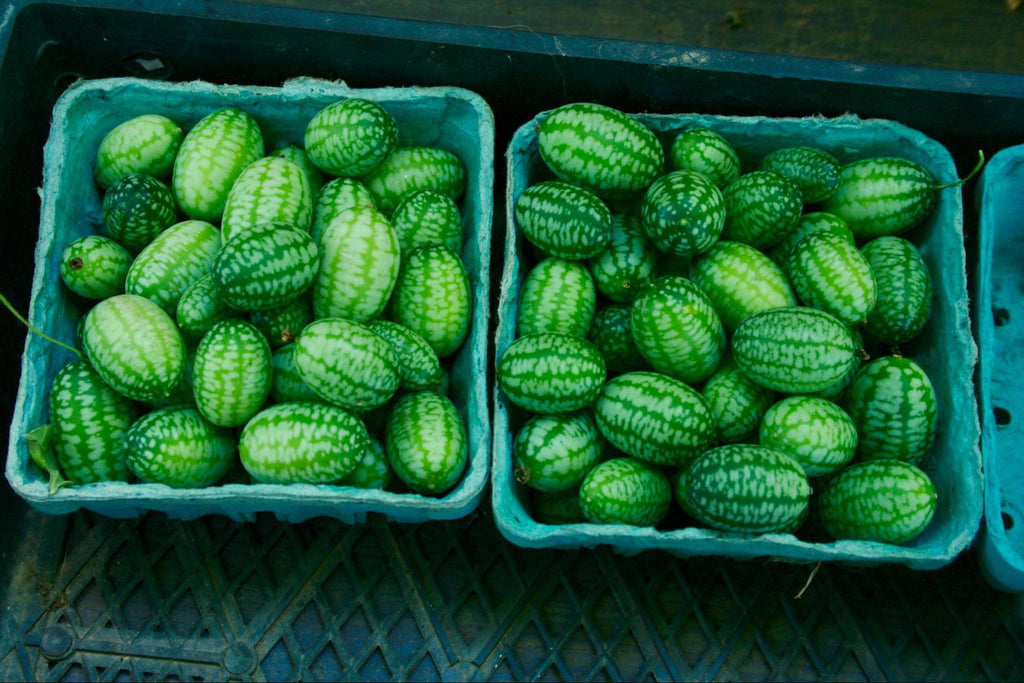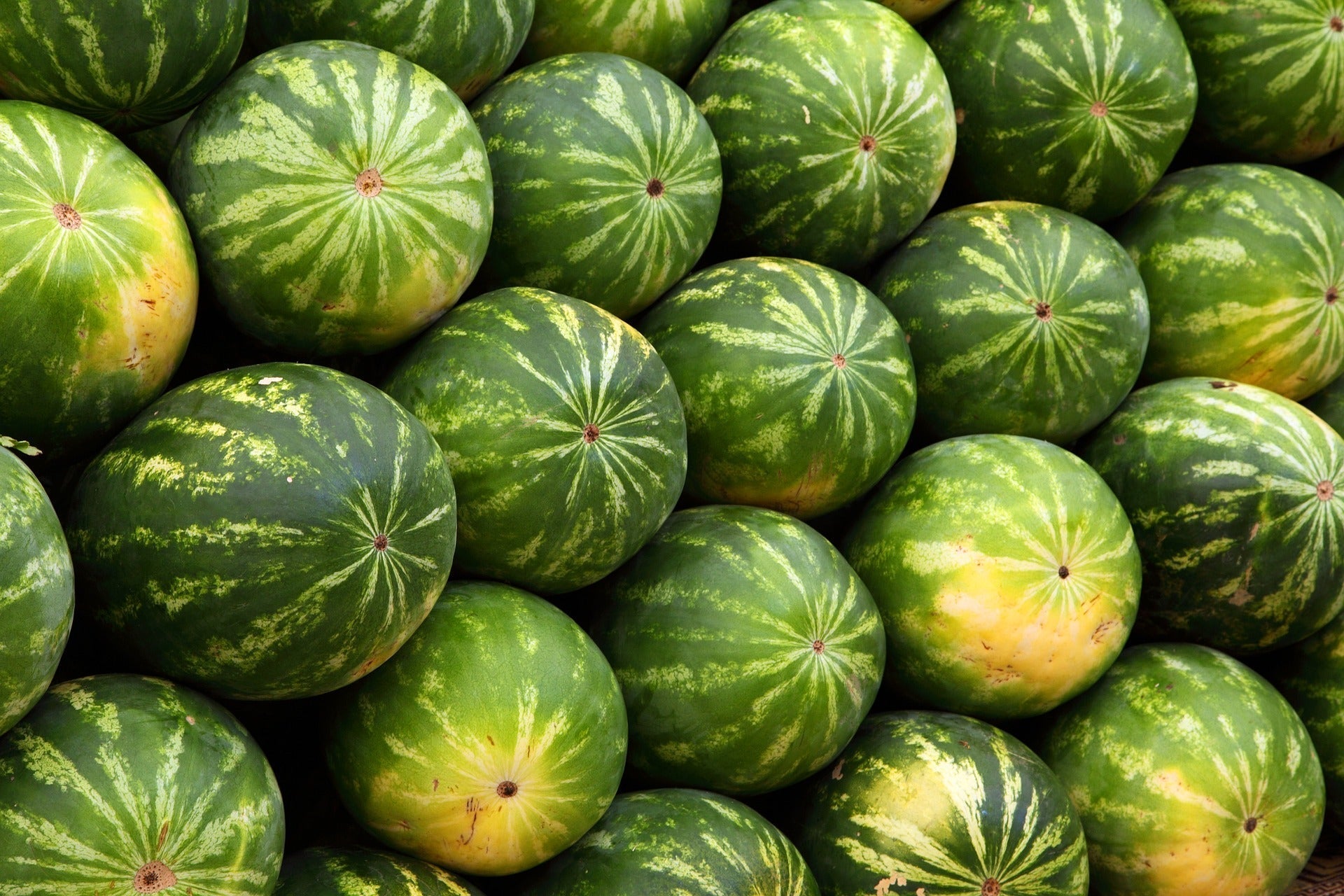Melons are not to be ignored. That sweet, juicy flesh is undeniable in the thick summer heat no matter where you’re located. When you start growing your own melons, you open up a world of delicious flavors unrivaled by any grocery store melon. Let’s take a look at a few common and rare types of melons.
What Is A Melon?
Melons are a beloved member of the Cucurbitaceae family. This means they’re related to squash and cucumbers. Melons are known for their sweet, edible, and fleshy fruit. Botanically, the melon is a type of berry! Melons are known to have been grown by ancient Egyptians and were some of the first crops to be brought by colonizers to the Americas. A number of indigenous tribes around New Mexico have been known to grow their own cultivars derived from melons introduced to them by the Spanish.
For the best melons, there is a short window of time between the transcendent flavor of perfectly ripe and perfectly rotten. To catch a melon at its peak, check the patch every other day when it’s getting close, looking for tell-tale signs of cracking around the stem and full aromas. Those fruits must absolutely be harvested and eaten on the same day. For a more failsafe harvest indicator, fruit is ready when it slips easily from the vine. Beware! Deer love perfectly ripe melons too, so guard your patch well!
4 Main Genera of Melons
Melon genera is a complicated subject because they can be umbrella terms for a pretty wide variety of species. The main thing to remember is that plants of the same species can cross with each other. So the species name will have to be taken into account when thinking about seed saving. Many types of melons will fall into one of these four genera.
Citrullus
Citrullus melons include our common watermelon as well as some other lesser known vines. This genus is most largely distinguished by the shape of its leaves which are deeply lobed.
Cucumis
The genus Cucumis includes both melons and cucumbers, as they are closely related. Your typical honeydew and cantaloupe fall under this category. This includes a wide range of varieties and is probably one of the most commonly grown melon genus.
Benincasa
This genus is a little harder to come by in common gardens. There is only one member of this genus which is Benincasa hispida, also known as the wax gourd. Native to southeast Asia, it is eaten as a vegetable when mature.
Momordica
Momordica is a slightly wider collection of melons and you may have heard of it referred to as bitter melon. Bitter melon is a staple in many Asian cuisines.
Common Types of Melons
Watermelon, Citrullus lanatus
Watermelons are some of our favorite sticky sweet melons for the height of summer. They have a very high water content, similarly to cucumbers. Watermelons are grown in tropical to temperate regions worldwide. They produce large fruits that are typically a bright red or hot pink color on the inside (though can be white or yellow as well) with a beautiful green rind on the outside. Commonly eaten raw alongside hot dogs and hamburgers, watermelon can also be blended into a delicious beverage or pickled for a shockingly delicious and unique snack.

Cantaloupe, Cucumis melo
Cantaloupes are sweet and tender and tend to be a bit fleshier than watermelons. Typically, they’re known for their bright orange insides with an ordinary beige rind. They love sandy soils but can be grown in many climates. Try adding cantaloupe to your charcuterie board or slicing it up into a salad!

Honeydew, Cucumis melo L. Inodorus
Honeydew melons are a close cousin of the cantaloupe - just take a look at their latin names! Honeydew is known for its green, not overly sweet flesh and performs particularly well here in the Southeast but can certainly be found growing elsewhere.

Casaba, Cucumis melo var. Inodorus
Casaba melons, yet another cousin of the honeydew and cantaloupe, is a white fleshed melon that looks more like a squash due to its textured yellow rind. Its unique flavor makes it delicious in both sweet and savory dishes and it grows best in dry, hot climates.

Rare Melon Varieties
Charentais Melon
This famous French cantaloupe is known for its powerful, flowery and fruity perfume. Its thick rind and salmon-orange flesh has a caramelized sugar flavor to its sweetness. This variety can tolerate cooler temperatures, making it a good choice for mid-western and high elevation growing locations.

Edisto 47 Melon
This cantaloupe is a Carolina favorite named for the hot and humid coastal conditions of South Carolina. It’s resistant to powdery and downy mildew and grows three- to five-pound fruits on vigorous vines.

Bradford Family Watermelon
The heirloom Bradford Family Watermelon is a super special, super rare variety. In its day, it was known as the sweetest, most flavorful watermelon right down to its dark green rind. It’s been grown by the Bradford family in South Carolina for over 100 years and so is particularly specialized to growing in that region. That being said, there’s been success in other locations as well.

Mexican Sour Gherkin
While we categorize this as a cucumber, this fruit - also known as mouse melon or cucamelon - deserves a special shout out. This rampant vine will produce dozens of one inch green and white fruits whose resemblance to watermelons will delight anyone who comes across them. While not particularly sweet like other melons, this cucumber is delicious pickled or eaten fresh.

Mountain Sweet Yellow Watermelon
That’s right! A yellow watermelon! With super sweet yellow flesh and classic black seeds, this unique watermelon found popularity in the 1840s because it was well-adapted to the cooler growing region of the Northeast. These fruits grow to about 20-35 pounds and are a show stopper at any picnic.

Armenian Cucumber
Now, this cucumber is actually, botanically, a melon. Though, culinarily, is most often used as a cucumber. But its hallmark thin skins and cucumbery taste makes it delectable in salads or beverages alike.

Melons are satisfying to grow AND eat. Whether you’ve got a sweet tooth or prefer a milder dessert, there's a three- to thirty-pound botanical berry (melon) for you.

|
Article Written by: Leah Smith |
|
About the Author: Leah Smith is the Seed Product Manager at Sow True Seed, where she focuses on adding new varieties to the catalog and ensuring the seed stock is top-notch. Her firsthand experience in farming has given her a deep understanding of cultivating crops while caring for the environment. |


